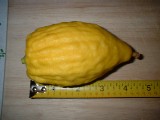Opening the door through mitzvah to the Mashiach
The Mashiach or the age of the Mashiach is much close than any of us can imagine. In fact you could measure the distance with the finest thinnest thread. This distance also happens to be the exact same distance between ourselves and that of the presence of G-d. This is however, not a coincidence. When we are able to completely span that infinitesimal distance then we will be one with God in all ways and by consequence usher in the age of the Mashiach.
Young David was listening to his father say his prayers one day and he asked him,
"Papa when is Mashiach coming?" David said sitting writing the letters in his notebook.
"Soon my son soon. We all have to do all the mitzvahs and make ourselves ready for that day," His father answered.
"Papa why do we have to wait? Why can't we go meet Mashiach? After all he must have had a long way to come since it is taking him so long. We could go out and give him a ride in our new car. I am sure he would like that and this way we wouldn't have to wait," David said smiling looking at his father for an answer.
"David. Mashiach won't come until we make this world a better place. All of us have to do our part," His father answered patiently.
"Papa you mean Mashiach hasn't even started out yet? He just sits there waiting for us to do our part?" David asked earnestly.
"Yes David it is just the way it is," He said to David looking into his kind innocent eyes.
"Well what if someone were to go knock on Mashiach's door and tell him that we are waiting. Maybe he would hurry up since everyone needs him so much. I will go and hold the door for him and show him the way in case he gets lost," David said eagerly.
"Son that isn't the way it is. We'll just have to wait now finish your lesson," Father said sternly.
David went back to his letters. Suddenly he spoke again.
"Father I don't understand. You say he is coming and yet you say we aren't ready which means he isn't coming after all. Then you say we must make ready but you expect him to find the way by himself. Someone has to go meet him that is all and then they can show everyone else the Mashiach," David said firmly or about as firmly as a seven year old could pull off.
"David no one can go meet the Mashiach because they don't where he lives," Father answered.
David looked up incredulously. "You mean all this time you have asked for someone to come and you don't know where he lives and you refuse to even give him directions to come. Papa it just isn't fair," David said with disappointment.
"Yes son but still we must pray for him to come," His father answered and then walked away.
David prayed and prayed and just knew that Mishiach would hear him. That night Mashiach came to him in a dream and said.
Know that I am always here just a thought away really. You did right of course. No one should have to wait for me rather they can come to me and I will me them halfway.
When David woke up there was peace in the world and all men lived as brothers and sisters. No one strived with another and greed was forever gone from the world.
When his father woke up however, nothing had changed.
David's father was wrong of course. We do know where the Mashiach lives. He lives in the heart of every mitzvah. We can too show the Mashiach the way into our hearts and from there expect to see his appearance in our lives. What is this Mashiach? It is our full connection with Hashem. Just like with everything else in this universe what we expect to come will come according to the strength and faith of our expectation. When the Israelites were asked to enter the Dead Sea it still hadn't parted but by the time the water reached the neck of the lead person their faith was sealed and the sea parted. It is this kind of matter of fact faith that brings the Mashiach. If we keep calling for him to come it is as if we are calling from afar. If we instead know in our hearts that the Mashiach is already here that is another story entirely and one that keeps being replayed throughout every mitzvah. You see it isn't the waiting for Mashiach that brings him into our lives it is our acceptance of him deep inside as a part of ourselves where our soul meets G-d.
 This was one of those which he had intended to be male. And why is the Etrog female? Because it is written (Leviticus 23:40), "The fruit of a beautiful tree, fronds of a date palm, [branches of a tree of leaves, and willows of the brook]." What is the fruit of a beautiful (hadar) tree? The Targum renders this verse, "The fruit of the Etrog tree, and the Lulav. "
This was one of those which he had intended to be male. And why is the Etrog female? Because it is written (Leviticus 23:40), "The fruit of a beautiful tree, fronds of a date palm, [branches of a tree of leaves, and willows of the brook]." What is the fruit of a beautiful (hadar) tree? The Targum renders this verse, "The fruit of the Etrog tree, and the Lulav. " 






